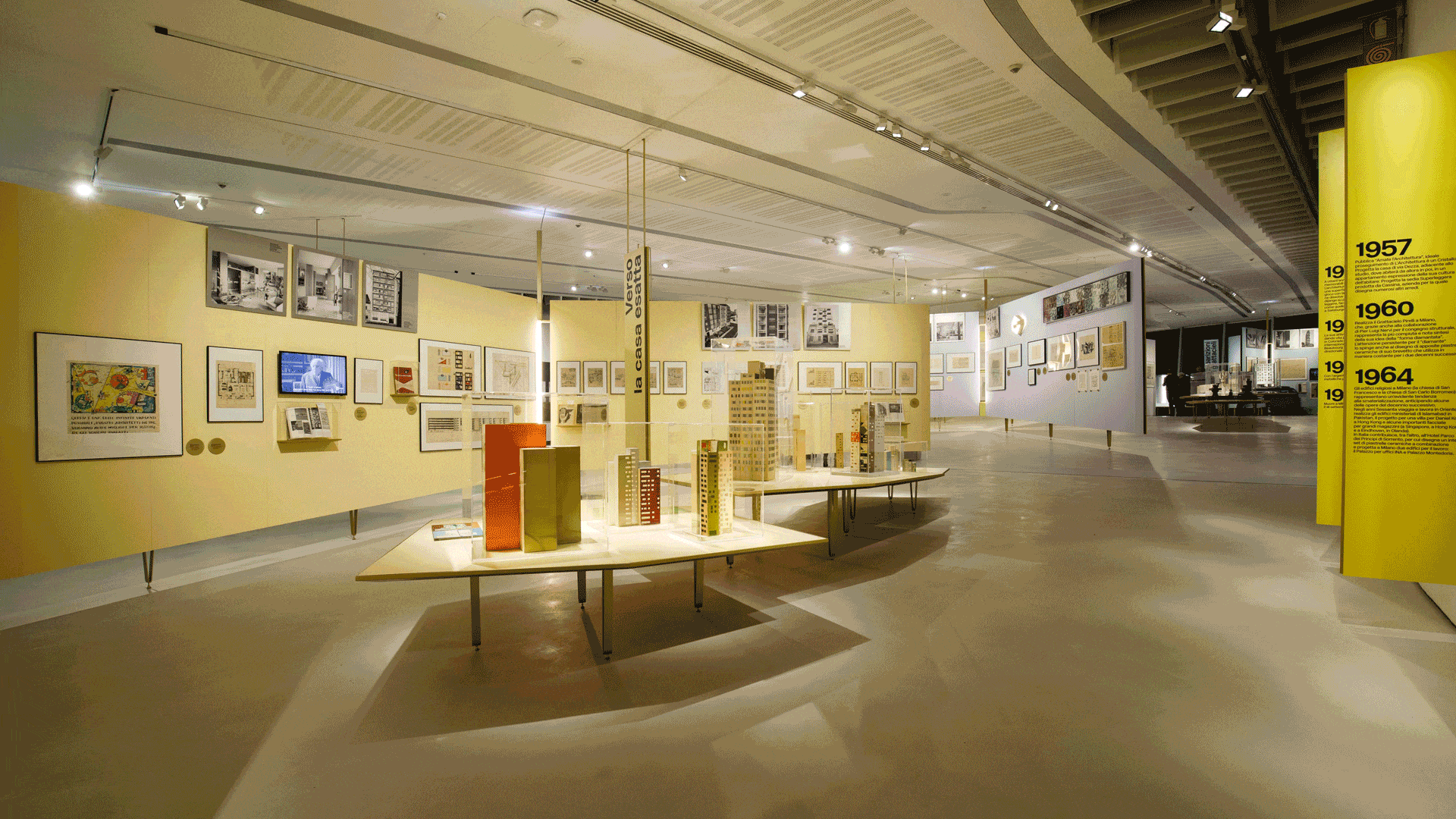Loving architecture
November 27, 2019–April 13, 2020
Via Guido Reni, 4/a
00196 Roma Italy
Italy
Hours: Tuesday–Sunday 11am–7pm
T +39 06 32486
press@fondazionemaxxi.it
Love architecture, be it ancient or modern. Love it for its fantastic,
adventurous and solemn creations; for its inventions; for the abstract,
allusive and figurative forms that enchant our spirit and enrapture our thoughts.
Love architecture, the stage and support of our lives.
-Gio Ponti
40 years on from his passing, MAXXI, the National Museum of XXI Century Arts, is devoting a major retrospective to this exceptional figure.
The exhibition
The exhibition title, Gio Ponti. Loving architecture echoes that of his best-known book, Amate l’architettura. Curated by Maristella Casciato and Fulvio Irace with Margherita Guccione, Salvatore Licitra and Francesca Zanella, the show will be hosted in MAXXI’s stunning gallery 5 from November 27, 2019, to April 13, 2020, and has been produced by MAXXI in collaboration with CSAC - Centro Studi e Archivio della Comunicazione of the Parma University, which conserves Gio Ponti’s professional archive, and the Gio Ponti Archives.
The sections
Towards the exact house
The research of a definition of the exact house, or better the house that would be suitable to the life of those who dwell in it, the modern life of modern humans, was always central in Ponti’s production. His research started from the typical Milanese Domus, i.e. from the origins of the domestic tradition, developed through the pages of the magazines, Ponti directed, “Domus” and “Stile,” and found its conclusion in Ponti’s apartment in Via Dezza—with its fluid spaces and visually connected rooms.
Living nature
Placed at the centre of Ponti’s design creativity, Nature establishes a bi-univocal and osmotic relation with architecture. For Ponti, Nature par excellence reveals itself along the coasts of the Mediterranean, the cradle of classic architecture but also of modern architecture, as expressed by the projects studied with Bernard Rudofsky between the end of the 1930s and the beginning of the 1940s.
Classicisms
In the competition project for the Palazzo dell’Acqua e della Luce for the E42, in the university seats of Liviano and Palazzo del Bo in Padua, and in the School of Mathematics at Rome’s Città Universitaria, besides establishing a dialogue between architecture and art, Ponti started from the monumental scale and moved down to the design of interior spaces and furnishings.
The architecture of the surface
Projects such as the Italian Cultural Institute in Stockholm or the Institute of Nuclear Physics at Sao Paulo in Brazil represent the accomplished expression of a design concept that reasons through planes rather than volumes. The façade becomes a two-dimensional surface that can be punctuated and folded like a sheet of paper.
Architecture as crystal
Ponti’s most telling and well-known aphorism expresses the idea that the “finished form” is a guarantee of a correct architecture: It is not the volume that makes architecture, but its closed, finished, immutable form. A consistent and univocal method that we find in impressive projects such as the Denver Art Museum or the chapel of San Carlo in Milan, and in the small scale design of door handles for Olivari, of bathroom fixtures for Ideal Standard, of ceramic tiles or the bodywork for a car called, not by chance, Diamante (Diamond).
Light façades
The history of humanity, Ponti affirmed, advances from weight to lightness, from the big to the slender: the prophecy of “lightness” called for the rising of “light and transparent style, a simple style connected to simplified social customs”. Therefore, lightness is not a literary metaphor for Ponti, but the answer to the construction methods of the 20th century, so much so that it takes on an ethical value, even before its formal one.
Appearance of skyscrapers
Ponti’s aspiration towards lightness translated into and aspiration for verticality when applied to buildings that were to be inserted in a consolidated urban context. Vertical development, in fact, allows a limited footprint and allowed Ponti to foretell the appearance of skyscrapers in the skyline of modern cities. In his design of high-rise buildings, the plan remains, however, a finite form, closed and absolutely original.
The spectacle of cities
On an urban planning level, Ponti developed an idea of the city that is intimately linked to the vertical development of architecture. He demonstrated this already in 1937 with the regeneration project of the former Scalo Sempione, where he fought against the concept of a horizontal garden district in favour of the organic composition of large ensembles placed along a wide tree-lined avenue.



